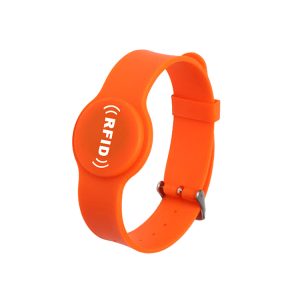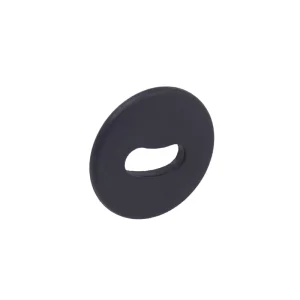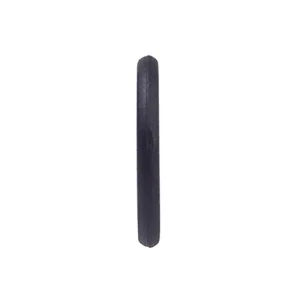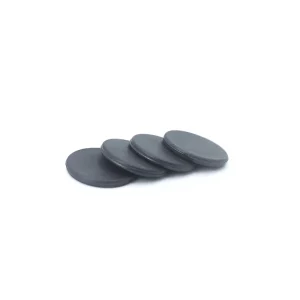Nyob rau hauv niaj hnub technology-tsav ntiaj teb no, raws li kev lag luam hauv sectors xws li mining thiab roj, tsheb thauj khoom, logistics, warehousing, shipping, thiab ntau dhau los ntawm kev hloov pauv digital, wireless technologies zoo li xov tooj cua zaus txheeb xyuas (Rfid) thiab nyob ze kev sib txuas lus (NFC) tau dhau los ua neeg nyiam tshaj plaws rau kev nrhiav cov cuab tam thiab cov khoom muag nrhiav. Xov tooj cua zaus identification (Rfid) thiab nyob ze kev sib txuas lus (NFC) tau loj hlob nyob rau hauv qhov tseem ceeb raws li kev sib txuas lus technologies. Muab lawv ntau yam zoo sib xws, Tej zaum koj yuav tsis paub meej txog lub tshuab twg yog qhov zoo tagnrho rau koj qhov kev siv tshwj xeeb thaum xaiv ntawm RFID thiab NFC. Kev sib txawv ntawm kev siv tshuab ntawm NFC thiab RFID, nrog rau lawv cov kev sib txuas lus ntau, daim ntawv thov domains, data transmission speeds, thiab ib qho nyeem cov ntaub ntawv ntim, txhua yam yuav tau hais meej meej hauv qhov blog no.
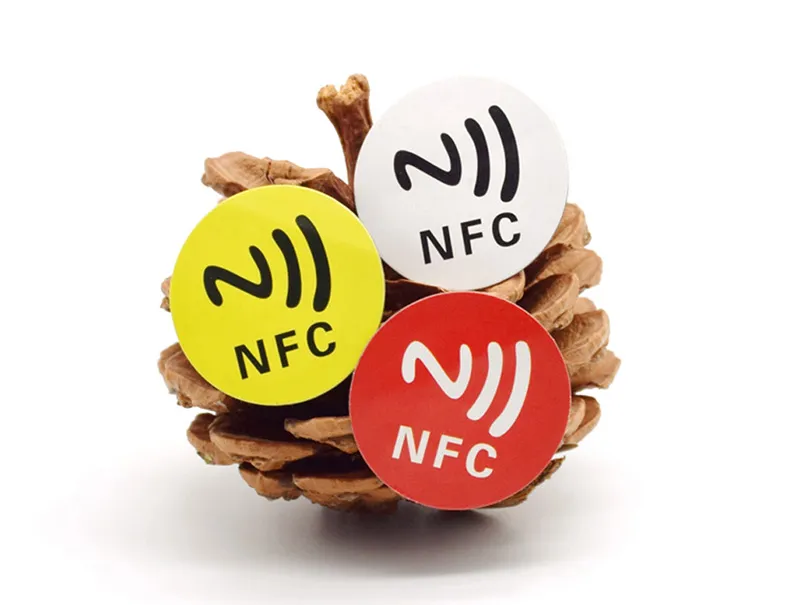
NFC yog dab tsi?
Nrog kev siv cov kev sib txuas lus nyob ze (NFC), cov cuab yeej siv tau tuaj yeem sib txuas lus nrog ib leeg hauv qhov luv luv. NFC tag, uas yog cov chips me me nrog cov ntaub ntawv khaws cia hauv, feem ntau txuas rau cov ntawv sau, daim nplaum, los yog hlau nplaum. Feem ntau ntawm cov xov tooj smartphones thiab ntsiav tshuaj tuaj yeem nyeem cov ntaub ntawv los ntawm NFC cim npe mus txog plaub ntiv tes.
Nws yog ib qho kev txhim kho ntawm kev sib txuas ntawm kev sib txuas thev naus laus zis nrog kev txheeb xyuas tsis muaj xov tooj cua zaus (Rfid). Kev sib koom ua ke ntawm inductive card nyeem ntawv, inductive cards, thiab kev sib txuas lus point-to-point enables realization ntawm ntau daim ntawv thov, suav nrog kev tswj kev nkag, mobile payment, thiab electronic ticketing.
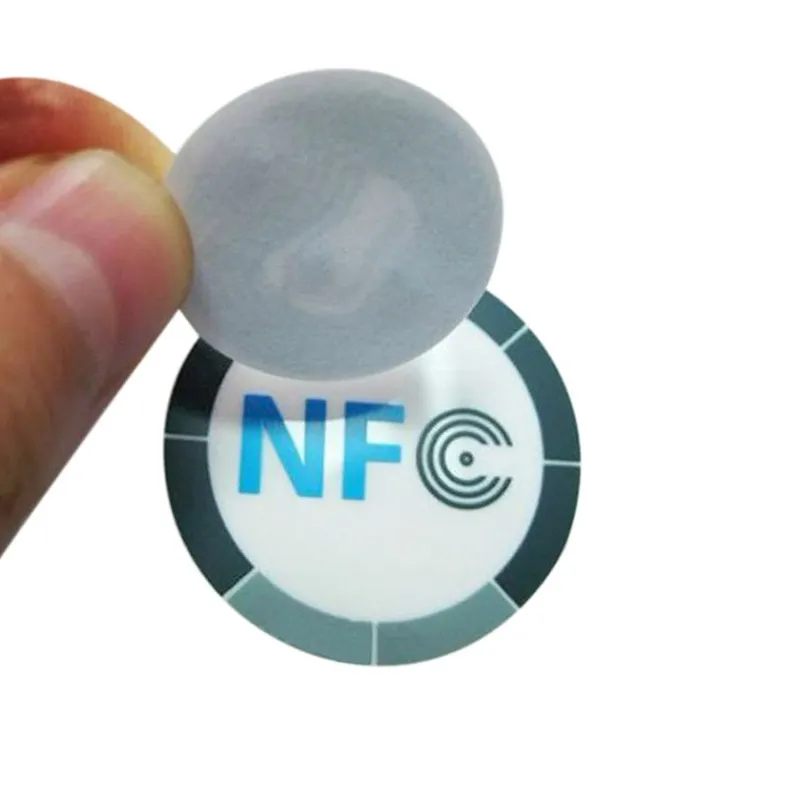
RFID yog dab tsi?
RFID yog kev sib txuas lus thev naus laus zis uas nyeem thiab sau cov ntaub ntawv cuam tshuam thaum siv xov tooj cua teeb liab los txheeb xyuas qee lub hom phiaj. Kev txheeb xyuas qhov system thiab lub hom phiaj tsis tas yuav ua kom muaj kev sib cuag nrog cov neeg kho tshuab lossis pom kev kom ua haujlwm. RFID daim npav siv lub zog los ntawm qhov cuam tshuam tam sim no los xa cov ntaub ntawv khoom lag luam uas muaj nyob hauv nti, los yog nws nquag xa cov teeb liab ntawm qee zaus, tom qab nws tau nkag mus rau hauv magnetic teb thiab tau txais los ntawm lub xov tooj cua zaus teeb liab tus nyeem ntawv tau tsim.
Txoj kev RFID ua haujlwm yog los ntawm kev txuas lub cim npe rau ib yam khoom (zoo li lub tsheb). Daim ntawv no xa cov ntaub ntawv mus rau tus nyeem ntawv nyob deb uas siv xov tooj cua nthwv dej. Cov ntaub ntawv yuav suav nrog lub sijhawm xa khoom, location, lwm. RFID tuaj yeem ua haujlwm ntau dua li NFC thiab feem ntau siv los saib xyuas thiab txheeb xyuas cov khoom lossis tib neeg.
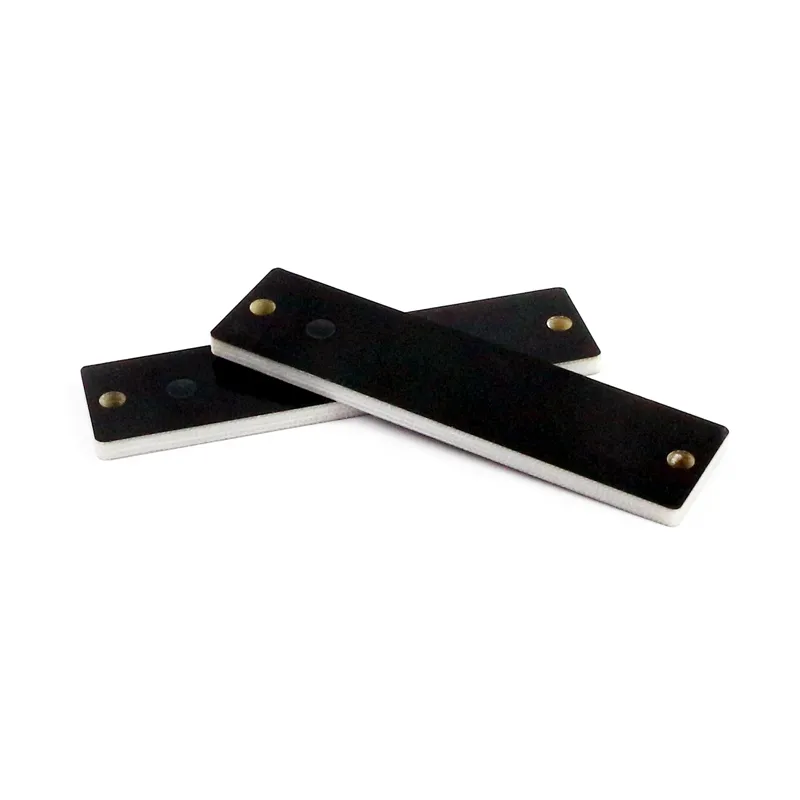
Dab tsi yog qhov txawv ntawm NFC thiab RFID?
Lub hauv paus ntawm qhov sib txawv ntawm NFC thiab RFID suav nrog kev sib raug zoo nrog ntau yam khoom siv, cov ntaub ntawv hloov ceev, communication range, frequency, thiab kev ruaj ntseg nta.
Txoj cai ntawm technology:
- Kev sib txuas lus nyob ze, los yog NFC, yog ib qho kev siv tshuab uas ua rau taw tes rau-taw tes, contactless cov ntaub ntawv kis ntawm cov khoom siv hluav taws xob nyob ze rau ib leeg. Nws yog ib qho kev sib txuas ntawm kev sib txuas thev naus laus zis nrog kev txheeb xyuas tsis muaj xov tooj cua zaus (Rfid). Kev sib koom ua ke ntawm inductive card nyeem ntawv, inductive cards, thiab kev sib txuas lus point-to-point enables realization ntawm ntau daim ntawv thov, suav nrog daim pib hluav taws xob, mobile payment, thiab tswj kev nkag.
- RFID yog ib hom kev sib txuas lus thev naus laus zis uas siv cov xov tooj cua hauv xov tooj cua los txheeb xyuas cov hom phiaj tshwj xeeb thiab nyeem thiab sau cov ntaub ntawv cuam tshuam yam tsis tas yuav ua rau lub cev lossis pom kev sib cuag ntawm lub cim thiab lub hom phiaj.. RFID daim npav siv lub zog los ntawm qhov cuam tshuam tam sim no los xa cov ntaub ntawv khoom lag luam uas muaj nyob hauv nti, los yog nws nquag xa cov teeb liab ntawm qee zaus, tom qab nws tau nkag mus rau hauv magnetic teb thiab tau txais los ntawm lub xov tooj cua zaus teeb liab tus nyeem ntawv tau tsim.
Qhov deb ntawm kev sib txuas lus:
- NFC: Nws tsuas tuaj yeem xa cov ntaub ntawv hla qhov luv luv, feem ntau yog kaum centimeters (3.9 ntiv tes).
Rfid: Kev sib txuas lus ntau yuav yog txhua yam los ntawm ob peb millimeters mus rau pua pua meters, nyob ntawm qhov zaus siv. For instance, low-frequency RFID muaj kev sib txuas lus ntau txog li 10 cm, high-frequency RFID muaj ntau yam ntawm 30 cm, thiab ultra-high-frequency RFID muaj ntau yam txog li 100 meters. - Hom kev sib txuas lus:
NFC: tso cai rau ob txoj kev sib txuas lus, tuaj yeem ua haujlwm raws li tus nyeem ntawv thiab tus cim, thiab tsim nyog rau cov xwm txheej nyuaj ntawm kev sib cuam tshuam, xws li cov phooj ywg-rau-peer (P2 P) Hloov cov ntaub ntawv thiab daim npav emulation.
Rfid: feem ntau siv ib-txoj kev sib txuas lus wireless; cov ntaub ntawv feem ntau yog xa los ntawm RFID tag rau RFID nyeem ntawv. Cov khoom siv RFID tuaj yeem ua haujlwm, los yog passive, txawm hais tias tsuas yog kev sib txuas lus ib leeg xwb (passive tag).
Cov chaw thov:
- NFC muab cov txiaj ntsig tshwj xeeb rau kev them nyiaj mobile, npav npav, access control, thiab lwm yam kev qhuab qhia.
RFID yog siv dav hauv kev saib xyuas, manufacturing, logistics, kev tswj cov cuab yeej cuab tam, thiab lwm thaj chaw. - Cov ntaub ntawv kis ceev: NFC feem ntau muaj kev sib kis ceev dua vim nws cov ntaub ntawv hloov pauv tau zoo thiab kev sib txuas lus qis dua.
Rfid: Kev sib kis ceev feem ntau qeeb dua NFC thiab nyob ntawm qhov zaus thiab raws tu qauv siv.
Ntau cov ntaub ntawv nyeem ib zaug:
- Rfid: RFID tags muab cov scan nrawm nrawm hauv cov khoom siv, ua rau lawv zoo tagnrho rau cov haujlwm xws li kev tswj cov khoom muag.
- NFC: In most cases, tsuas yog ib qho NFC tag tuaj yeem nyeem ib zaug, ua rau nws tsim nyog rau cov xwm txheej zoo li kev them nyiaj tsis sib cuag.
Siv cov ntaub ntawv sib piv:
Cov kev siv tseem ceeb thiab kev lag luam zoo ntawm NFC thev naus laus zis
Kev lag luam wholesale
Kev them nyiaj txawb: NFC thev naus laus zis tau siv dav hauv kev them nyiaj mobile, xws li kev them nyiaj hauv xov tooj. Cov neeg siv khoom tsuas yog yuav tsum nqa lawv lub xov tooj ntawm tes ze rau NFC-enabled POS tshuab kom tiav cov nyiaj them poob haujlwm, tsis nqa daim npav lub cev, uas txhim kho qhov yooj yim thiab efficiency ntawm kev them nyiaj.
E-hnab nyiaj: NFC thev naus laus zis kuj tseem txhawb nqa e-hnab nyiaj ua haujlwm. Cov neeg siv tuaj yeem khaws cov kev them nyiaj xws li daim npav hauv txhab nyiaj thiab daim npav rho nyiaj hauv cov khoom siv hluav taws xob, paub txog kev sib koom ua ke thiab hloov pauv sai ntawm ntau txoj kev them nyiaj.
Identity authentication: NFC thev naus laus zis tuaj yeem ua tiav kev lees paub tus kheej muaj kev nyab xeeb thiab siv rau hauv cov xwm txheej xws li nkag mus tswj systems, ID cards, thiab passports, txhim kho kev ruaj ntseg thiab yooj yim.
Kev lag luam kho mob
Kev saib xyuas tus neeg mob: Nrog NFC technology, Cov neeg ua haujlwm kho mob tuaj yeem taug qab tus neeg mob qhov chaw, kev kho mob thiab lwm yam ntaub ntawv nyob rau lub sij hawm, txhim kho kev ua tau zoo thiab raug ntawm kev saib xyuas neeg mob.
Kev saib xyuas hauv tsev: Cov khoom siv xws li NFC-enabled wristbands tuaj yeem teeb tsa los taug qab cov neeg mob’ cov ntaub ntawv kho mob tseem ceeb. Cov neeg mob tsuas yog yuav tsum tau kov lub dab teg rau lub cuab yeej ntse kom xa cov ntaub ntawv kho mob, uas yooj yim rau cov kws kho mob saib xyuas thiab kuaj xyuas nyob deb.
Smart ID bracelet: Rau cov neeg muaj mob hnyav, xws li ntshav qab zib, mob hawb pob, lwm., NFC-enabled bracelets yuav siv tau los hloov cov tsoos tshuaj ceeb toom bracelets los muab cov ntaub ntawv tseem ceeb ntxiv rau cov neeg ua haujlwm xwm txheej ceev.
Kev lag luam tsheb thauj mus los
Logistics taug qab: NFC cim npe tuaj yeem txuas rau cov khoom, thiab cov khoom tuaj yeem txheeb xyuas sai thiab taug qab los ntawm cov ntsiav tshuaj qib qib thiab lwm yam khoom siv, txhim kho kev ua tau zoo thiab qhov tseeb ntawm kev xa khoom logistics.
Identity authentication: Nyob rau hauv pej xeem kev thauj mus los, Cov neeg caij tsheb tuaj yeem siv NFC-enabled cards lossis xov tooj ntawm tes los txheeb xyuas daim pib thiab them nyiaj, txhim kho kev caij tsheb.
Kev siv tseem ceeb thiab kev lag luam zoo ntawm RFID thev naus laus zis
Kev lag luam logistics
Kev tswj cov khoom muag: RFID thev naus laus zis tuaj yeem saib xyuas cov khoom muag kom muaj nuj nqis thiab qhov chaw nyob hauv lub sijhawm, txhim kho qhov tseeb thiab kev ua haujlwm ntawm kev tswj cov khoom muag.
Supply chain management: RFID thev naus laus zis tuaj yeem txheeb xyuas qhov chaw thiab xwm txheej ntawm cov khoom, paub automated tswj, thiab txo cov neeg ua haujlwm thiab cov nqi khoom siv.
Kev tiv thaiv cuav traceability: Los ntawm txuas RFID cim npe rau cov khoom, Cov khoom siv authentication thiab taug qab tuaj yeem ua tiav, txo kev ncig ntawm cov khoom cuav thiab shoddy.
Manufacturing industry
Kev tswj hwm ntau lawm: RFID thev naus laus zis tuaj yeem ua tiav kev taug qab thiab taug qab cov ntaub ntawv raw, ntu, semi-finished khoom thiab cov khoom tiav, txhim kho cov pob tshab thiab kev tswj hwm ntawm cov txheej txheem tsim khoom.
Kev tswj kom zoo: RFID thev naus laus zis tuaj yeem sau cov ntaub ntawv xws li cov txheej txheem tsim khoom, qhov tseem ceeb tsis zoo thiab qhov ntsuas qhov zoo ntawm cov khoom, pab kom ua tiav tag nrho traceability thiab traceability ntawm cov khoom zoo.
Automated warehouse system: RFID thev naus laus zis tuaj yeem saib xyuas thiab tswj qhov chaw khaws cia thiab kom muaj nuj nqis ntawm cov khoom hauv lub sijhawm, txhim kho kev ua tau zoo thiab qhov tseeb ntawm cov khoom ntim khoom.
Kev tswj kev nkag
Identity identification: RFID thev naus laus zis tuaj yeem ua tiav kev txheeb xyuas tus kheej thiab kev nkag mus tswj tau zoo, txo tus neeg siv kev ua haujlwm nyuaj thiab lub sijhawm tus nqi.
Kev saib xyuas cov neeg khiav dej num: Los ntawm kev teeb tsa RFID nyeem ntawv ntawm ntau qhov chaw, lub kaw lus tuaj yeem sau thiab saib xyuas kev nkag thiab tawm ntawm cov neeg ua haujlwm hauv lub sijhawm, muab lub hauv paus rau kev tswj hwm kev ruaj ntseg.
Tswb thiab ceeb toom ntxov muaj nuj nqi: RFID thev naus laus zis kuj tseem tuaj yeem muab lub tswb nrov hauv lub sijhawm thiab kev ceeb toom ntxov ua haujlwm txhawm rau txhim kho kev ruaj ntseg ntawm kev tswj xyuas kev nkag.
Xaus
Hauv cov ntsiab lus, peb tau txais kev nkag siab ntawm cov ntsiab lus yooj yim, communication ranges, thiab kev lag luam tshwj xeeb cov txiaj ntsig ntawm NFC thiab RFID thev naus laus zis los ntawm peb qhov kev tshawb xyuas tob. Qhov sib txawv tseem ceeb ntawm ob lub thev naus laus zis - ib sab ntawm lawv cov txiaj ntsig - yog kev sib txuas lus nyob deb, data transmission speed, nqi, thiab cov xwm txheej uas txhua tus tuaj yeem siv tau. Raws li qhov tshwm sim, thaum xaiv cov tshuab uas zoo tshaj plaws raws li koj xav tau, khaws tej no rau hauv siab.
Kev txiav txim siab thev naus laus zis tsim nyog tuaj yeem txhawb koj lub tuam txhab kev tsim khoom thiab tej zaum yuav txhim kho cov neeg siv khoom txaus siab. RFID thev naus laus zis zoo tshaj hauv kev xa khoom, manufacturing, thiab nkag mus tswj nrog nws txoj kev sib txuas lus mus ntev, loj-muaj peev xwm khaws cov ntaub ntawv, thiab automated ua; NFC thev naus laus zis tau pom qhov zoo tshwj xeeb hauv khw muag khoom, healthcare, thiab kev thauj mus los nrog nws txoj kev sib txuas lus ze, kev ruaj ntseg siab, thiab yooj yim.
FAQ
Ua credit cards siv RFID lossis NFC?
NFC thev naus laus zis feem ntau yog siv hauv daim npav rho nyiaj. Nyob ze Field Communication yog luv rau NFC. Txawm hais tias nws tau tsim rau kev sib txuas lus luv luv wireless, nws yog raws li RFID (Xov tooj cua Frequency Identification) technology thiab feem ntau yog siv rau kev nkag mus tswj systems, mobile phone payments, thiab lwm yam kev siv.
Yuav qhia li cas yog tias daim npav yog NFC lossis RFID?
Kev txheeb xyuas daim npav raws li NFC lossis RFID yuav tsis yooj yim rau cov neeg siv khoom nruab nrab vim yog cov xov tooj cua sib piv siv los ntawm ob lub thev naus laus zis. Txawm li cas los, daim npav yuav yog NFC yog tias nws siv rau kev sib txuas lus luv luv lossis them nyiaj hauv xov tooj. RFID feem ntau yog siv rau kev txheeb xyuas ntau dua thiab sau cov ntaub ntawv thov, xws li kev tswj cov cuab yeej cuab tam thiab kev saib xyuas logistics.
Tej zaum nws yog daim npav NFC yog tias nws muaj NFC lub logo lossis lub logo (xws li lub cim nrog N thiab F) ntawm nws.
Lub xov tooj puas muaj NFC lossis RFID?
Cov xov tooj ntawm tes niaj hnub no feem ntau yuav suav nrog NFC thev naus laus zis. Cov neeg siv tuaj yeem xa cov ntaub ntawv, ob peb li, them nyiaj contactless, thiab ntau dua siv lub xov tooj sib xyaw NFC module. RFID feem ntau yog siv los luam theej duab RFID cim npe siv cov khoom siv sab nraud lossis daim npav nyeem ntawv.
NFC thiab RFID tuaj yeem siv ua ke?
Tseeb tiag, NFC thiab RFID tuaj yeem ua ke. Txawm tias siv cov technologies txawv, NFC xov tooj thiab scanners feem ntau tuaj yeem nyeem RFID cim npe vim lawv ua raws li RFID cov qauv. Thov nco ntsoov, txawm li cas los xij, tias RFID thev naus laus zis tuaj yeem sib txuas lus ntev dua li NFC thev naus laus zis, uas yog npaj rau kev siv luv luv.
Dab tsi yog qhov zoo thiab qhov tsis zoo ntawm RFID?
Cov txiaj ntsig
Kev tshuaj ntsuam ceev: Ntau RFID cim npe yuav raug tshuaj xyuas thiab txheeb xyuas ib txhij los ntawm RFID scanners.
Qhov me me thiab ntau hom ntawv: RFID cim npe yuav raug tsim nyob rau hauv ntau yam me me thiab ntau hom ntawv.
Durability thiab anti-pollution muaj peev xwm: RFID cov cim npe muaj qib siab ntawm cov tshuaj tiv thaiv, dej, thiab roj.
Reusable: Cov ntaub ntawv tuav hauv RFID cim npe tuaj yeem raug ntxiv, changed, thiab tshem tawm tsis tu ncua.
RFID muaj peev xwm nkag mus rau cov ntaub ntawv uas tsis yog xim hlau lossis cov ntaub ntawv uas tsis yog pob tshab nrog rau cov ntawv, ntoo, thiab yas, tso cai rau kev ntsuas tsis muaj teeb meem.
Cov ntaub ntawv loj muaj peev xwm: RFID thev naus laus zis muaj peev xwm tshaj plaws ntawm ob peb MegaBytes.
Security: Cov passwords yuav raug siv los tiv thaiv cov ntaub ntawv muaj nyob hauv RFID cim npe, uas nqa cov ntaub ntawv hluav taws xob.
Qhov tsis zoo:
Nqi: RFID systems tej zaum yuav muaj tus nqi pib nqis peev tseem ceeb.
Kev txhawj xeeb txog kev ceev ntiag tug: RFID cov cim npe tsim teeb meem tsis pub lwm tus paub vim tias lawv tuaj yeem siv los saib xyuas tus kheej ua haujlwm.
Nyob ntawm hluav taws xob: Txhawm rau kom RFID cim npe ua haujlwm, roj teeb lossis fais fab feem ntau xav tau.
Qhov twg yog pheej yig dua, NFC los yog RFID?
Lub ntsiab lus no tsis muaj lus teb yooj yim vim muaj ntau qhov sib txawv uas cuam tshuam rau tus nqi, suav nrog hom gadget, nws lub hom phiaj, qhov ntim ntawm kev tsim khoom, lwm. Txawm li cas los, vim RFID cov cim npe feem ntau yooj yim los tsim thiab siv, lawv tuaj yeem pheej yig dua. Cov xov tooj smartphones thiab lwm yam NFC cov khoom siv feem ntau muaj cov yam ntxwv ntau dua thiab nyuaj dua, yog li lawv tus nqi yuav ntau dua.
Yog kuv tus yuam sij fob NFC lossis RFID?
Nws yog ib qho nyuaj rau kev txiav txim kom paub tseeb tshwj tsis yog qhov tseem ceeb fob qhia meej txog NFC lossis RFID lub npe. Txawm li cas los, muab tias NFC feem ntau yog ua haujlwm rau kev sib txuas lus luv luv, tej zaum nws yuav yog NFC yog tias qhov tseem ceeb fob siv rau hauv cov xwm txheej uas yuav tsum tau muaj kev sib txuas lus luv luv, xws li npav npav thiab kev tswj hwm kev tswj hwm. RFID feem ntau siv nyob rau hauv cov xwm txheej xws li kev tswj cov khoom muag thiab kev saib xyuas cov khoom vaj khoom tsev uas hu rau kev sib txuas lus mus ntev.
Yog lub tsev tseem ceeb fob NFC lossis RFID?
Nyob ntawm qhov layout thiab specifications ntawm lub tsev apartment nkag tswj system, tus fob tseem ceeb rau chav tsev yuav yog RFID lossis NFC. Lub fob tseem ceeb yog tej zaum NFC yog tias qhov kev tswj xyuas nkag tau tso cai rau kev sib txuas lus luv luv lossis them nyiaj mobile.
Yog daim credit card NFC lossis RFID?
Hauv cov hlab ntsha zoo sib xws, daim npav tseem ceeb yuav yog NFC lossis RFID. Txawm li cas los, daim npav tseem ceeb yog feem ntau siv NFC muab ntau npaum li cas NFC siv hauv npav npav, nkag mus tswj systems, thiab lwm yam kev siv. Txawm li cas los, Nws yog ib qho nyuaj rau txheeb xyuas nws cov hom meej thaum tsis muaj cov cim lossis cov ntaub ntawv sib txawv.
![Rfid Tag Manufacturers [Lag luam wholesale | Dos | Odm]](https://www.fjrfidfactory.com/wp-content/uploads/2024/04/logo.webp)
